How The 🔫 Gun Emoji And Other Controversial Emojis 🍔 Shaped The Way We See Things
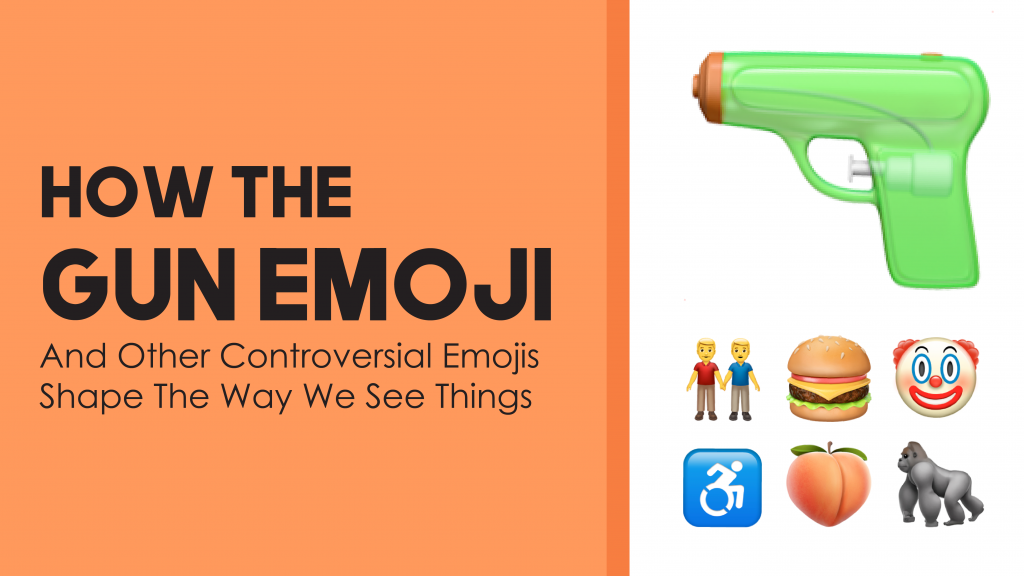
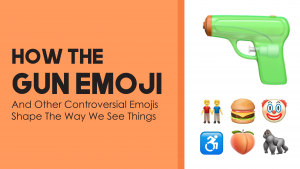
Emojis are fast becoming the world’s biggest form of communication. Every day, people send out 60 million emojis on Facebook. On Instagram, almost 50 percent of comments contain emojis! Every year, the emoji dictionary increases. This year, 117 new designs are scheduled for release. As the emoji world gets bigger, so does how we see things. We are more open to other ways of thinking; we are more sensitive to others’ needs. To get more into this, let’s review the story behind the 🔫 Gun emoji.
Gun Emoji
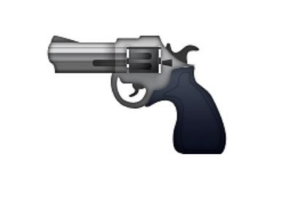
Photo from Maxim.com
The 🔫 Gun emoji is an illustration of a revolver, a handgun with a revolving cylinder, multiple chambers, and at least one barrel for firing. In 2016, the Unicode Standard released the Gun emoji under Unicode 6.0, the first version of the Unicode Standard to support emoji. The Gun emoji belonged to the pioneering batch of emojis.
Gun Emoji On Other Platforms
Almost every major online platform supported the Unicode Standard. Apple, Google, Samsung, Facebook, and Twitter designed their Gun emoji to resemble a revolver. Microsoft was the only different one; Microsoft’s version was a funky alien ray gun, which eventually changed to a revolver.
Negative Effects Of The Gun Emoji

Photo from The Local
Whoever said emojis don’t have any impact on the world was 100 percent wrong. Whether intentionally or unintentionally, the Gun emoji caused a great amount of trouble, much like the real-world object it represents. In 2016, a French court sentenced a French man to six months in jail after sending his ex-girlfriend the Gun emoji. According to the French court, the message could be interpreted as a death threat.
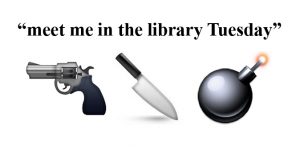
Photo from the Web Of Language
The same year, a 12-year-old from Virginia got into trouble with the police after threatening her school with a social media message that contained a 🔫 Gun emoji, 💣 Bomb emoji, and 🔪 Kitchen Knife emoji. The alarming news prompted the group New Yorkers Against Gun Violence to launch a Twitter campaign, forcing Apple to remove the Gun emoji because it promotes violence. The group used the hashtag #DisarmThePhone in all their Tweets.
Apple Changes Its Gun Emoji

Photo from Los Angeles Times
Maybe Apple gave in to the pressure, or maybe they began to be more cautious. We may never know the truth behind it, but what we know is that when Apple rolled out iOS 10, the tenth major release of the iOS mobile operating system, the tech company removed the Gun emoji and replaced it with a bright green and orange squirt gun.
Apple Rallies Against The Rifle Emoji

Photo from The Telegraph
Apple reportedly pressured the Unicode Consortium to remove a Rifle emoji from its list of new emoji candidates in 2016. The tech giant told the consortium it would not support a rifle on its platforms and asked it not to be made into an emoji.
Apple’s complaints worked. Mark Davis, the Unicode President, confirmed the Rifle emoji will show up in the official Unicode Character Database but will not appear on any emoji keyboard.
Samsung Changes Its Gun Emoji
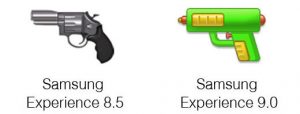
Photo from Tech Crunch
It may have taken them two years to do it, but they did it! In 2018, Samsung switched out its Gun emoji for a new toy gun. The old Gun emoji had a brown handle, and its other parts were silver, while the new Gun emoji looked as harmless as harmless can be, with a dark green body, orange trigger, and white and orange circle on its side. Users of the Samsung Galaxy S9 got to see the new Gun emoji for the first time. Samsung included the toy gun in its 2018 software release packaged with the Galaxy S9.
Twitter Changes Its Gun Emoji
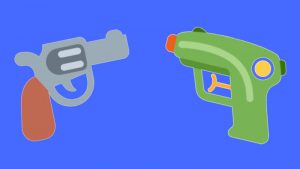
Photo from Gizmodo
In 2018, Twitter announced several changes in its Twemoji 2.5 update. One of its biggest changes involved ditching the Gun emoji for a water gun. According to a Twitter rep, the change was made for consistency’s sake, to match how the emoji looks in other platforms.
Google Changes Gun Emoji

Photo From Tech Crunch
In 2018, Google followed Apple’s lead by matching Apple’s design direction. They changed its Google Gun emoji from a cartoon revolver to a bright orange squirt gun. Many people believed Google’s drastic move was more of a political statement since the controversial Parkland shooting occurred in the same year. The Parkland shooting happened in February 2018, when a gunman opened fire at a high school in Parkland, Florida, killing 17 people and injuring 17 others.
Google Product Manager Agustin Fonts said the company was cautious about changing the Gun emoji because they want to be as compatible with other systems as possible. Given that Apple, Samsung, and Twitter made the change from guns to water pistols, perhaps Google thought it would already be safe to do the same.
Gun Emoji Today



Today, the term “Gun emoji” does not exist. Nearly all online platforms and operating systems use the word 🔫 Pistol for this emoji. Apple, Google, Facebook, Windows, Twitter and Samsung now use images of water pistols or squirt guns as a replacement for the handgun. Only JoyPixel, Gmail, and SoftBank still use the classic handgun or revolver.
Facebook And Instagram Ban Peach And Eggplant Emojis

Photo from New York Post
In the emoji world, you never know what you will get. Symbols have meanings you never thought they’d have! Like the 🍆 Eggplant and 🍑 Peach emoji, whoever thought they’d have a sexual undertone? The Peach emoji is an illustration of a peach fruit with green leaves and sometimes a stem, while the Eggplant emoji is an image of a bright purple eggplant with a leafy system.
Recently, the two emojis have taken on a new layer of meaning. As its fuzzy, cleft appearance looks like a juicy rear end, the Peach emoji quickly came to stand for buttocks on social media and in text messages. At the same time, some people used the Eggplant emoji to represent a penis, mostly due to its phallic appearance.


Last year, Facebook and Instagram released updates to their guidelines, telling the public using an emoji in a sexual manner could get a user banned. This included the Peach emoji and Eggplant emoji. Based on the updated guidelines, Facebook and Instagram will remove the emoji if it is beside a direct or indirect request for sex or nude images. Emojis covering butts, nipples, and other sensitive parts of the body were also banned.
Yellow Emoji Controversy
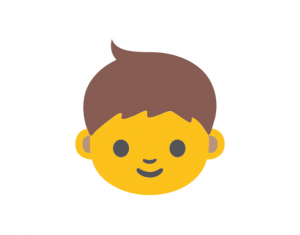
Apple found itself in hot water again after releasing the Mac OS X Yosemite, the 11th major release of OS X, Apple’s desktop and server operating system for Macintosh computers. A new, Yellow Face emoji came with the operating system. Many assumed the yellow skin color represented Asians. This received a lot of mixed reactions.
Racist Yellow Emoji?

Photo from Fast Company
Some users thought the Yellow emoji was too yellow. They thought the emojis looked like they were suffering from jaundice. Others were more appreciative; they supported the Yellow Face emoji because it meant Asians were more represented.
Now here was the problem. Apple didn’t release the Yellow Face emoji to represent Asians. Apparently, the Yellow emoji replaced the White emoji as the default emoji. When you press the Yellow emoji, you’ll see several skin tone colors for the user to pick from. Apple picked yellow because it is the color of the traditional smiley. Nothing more, nothing less. Once the truth came out, the issue died a natural death.
Gorilla And Clown Emojis

Photo from NBC News
What do a gorilla and a clown have in common? Apart from being circus acts, not much. That said, it is understandable how the 🦍 Gorilla and the 🤡 Clown or the 🤡 Clown Face emoji caused controversy after they were included in an iOS update in 2016. Users thought Apple was riding the creepy clown bandwagon. Unfortunately, in the same year, people wearing clown costumes began terrorizing folks all over the world.
Harambe The Gorilla

People became suspicious of the 🦍 Gorilla emoji, too. The gorilla reminded people of Harambe, a male gorilla shot and killed at the Cincinnati zoo in May 2016. A three-year-old boy climbed into a gorilla enclosure in the Cincinatti Zoo. Harambe grabbed and dragged the boy. Apple neither confirmed nor denied any connection to Harambe and the scary clown incident. Maybe Apple did it for publicity, or maybe it was bad timing? Your guess is as good as ours.
Fat Emoji

Photo from ConscienHealth
Happy, sad, angry, these are all feelings. But is fat a feeling? For a while, Facebook thought so. In 2015, Facebook released a “feeling fat” emoji, an image of the usual smiley but with a double chin. This instantly drew the ire of many users. For them, if fat is not a feeling, why is it even there?
The feminist group, Endangered Bodies, led by Catherine Weingarten spearheaded a campaign against the emoji. The group even created a petition on Change.org, which generated over 15,000 signatures. According to Endangered bodies, the emoji encouraged body shaming and made fun of fat people. At first, Facebook refused to change the emoji but later gave in and changed the name of the emoji from “feeling fat” to “feeling stuffed.”
LGBT Emojis

Photo from The Hollywood Reporter
LGBT topics are always controversial, even when they appear in emojis. Apple knows this all too well. In 2015, Apple found itself under investigation by Russian police. The tech giant was accused of promoting gay propaganda.
Since Russia is a conservative country and same-sex relationships are frowned upon, the LGBT emojis seemed to run afoul of Russia’s laws, which forbid the use of LGBT images, LGBT signs, and other LGBT-related merchandise. The “offensive images” included emojis of same-sex parents, gay pride flags, etc. These images were part of Apple’s computer company’s iOS 8.3 operating system update.
LGBT emojis have also come under fire in Indonesia. So much so that the Indonesian government ordered all online platforms to remove all LGBT-related emojis from their system. It’s interesting to note, unlike Russia, homosexuality is not illegal in Indonesia, but is still a taboo subject.
Wheelchair Emoji
In 1968, Susane Koefoed designed the first ♿ Wheelchair Symbol emoji. The design showed a person with no head, sitting upright in a wheelchair. The symbol went through several versions after that.

One of the most popular versions, introduced in an emoji in iOS, showed the individual lunged forward as if in motion. Titled the “accessible icon,” the emoji was rejected by the International Organization for Standardization and banned by the US Government for being discriminatory towards disabled people.
The designers of the accessible icon are not disabled which became an issue for some people. Some people thought only disabled people had the right to design disability-related symbols because they know the needs of the disabled better than anyone else.
Manual Wheelchair Emojis


In February 2019, the Unicode Consortium released several disability-related emojis featuring people in motorized and manual wheelchairs. For the 🦽 Manual Wheelchair emoji, the emoji showed a picture of a wheelchair propelled by the user by manually rolling the wheels by hand. The Consortium released both male and female versions of this emoji.
Motorized Wheelchair Emojis


As for the 🦼 Motorized Wheelchair emoji, the design of this symbol is like the manual version, but with a motor. The 2019 versions were more well-received than the previous designs. Aside from looking more realistic, organizations like the American Council Of The Blind, Cerebral Palsy Foundation, and National Association of the Deaf played a big part. They helped in the development of the design and fulfilled the request of having disabled people design their symbols.
Much Ado Over A Burger

Never underestimate the power of fast food and emojis. In 2017, Google saw just how powerful those two things could be when a tweet about Google’s 🍔 Hamburger emoji went viral. Social media analyst Thomas Baekdal compared Google’s burger to Apple’s burger. The cheese on Apple’s 🍔 Hamburger emoji went on top of the patty, while the cheese on Google’s burger is under the meat patty and on top of the lower bun.

“I think we need to have a discussion about how Google’s burger emoji is placing the cheese underneath the burger, while Apple puts it on top,” tweeted Baekdual. People retweeted the controversial 17,000 times and gave 1,500 comments on the right positioning of the cheese.
Cheese On Top Of A Patty

Photo from Tech Crunch
In a surprising turn of events, Google CEO Sundar Pichai replied to Baekdual’s Tweet. Pichai said he will drop everything to fix the problem. Pichai turned out to be a man of his word. In just a few days, the cheese moved from the bottom of the hamburger to the top of the patty.
Conclusion

Photo from Ncr blog
To conclude, novelist Tom Robbins once said, “Our similarities bring us to a common ground; our differences allow us to be fascinated by each other.” We can say the same thing about how we react to emojis. Emojis bring us together. How we perceive them shows us how different we are.

Photo from Video Hive
Being different is okay. We can choose different ways to live without one of us being wrong. If something doesn’t sit well with us, it’s okay to voice our opinion. However, before we go on social media or before we type out that email, we should also be clear about our intentions and goals. Do we want to help people? Or do we just want to create noise? Why are we doing what we do?

Photo from Towards Data Science
Some people think just because they hide behind a computer screen, they can always be mean. That is not right. The digital world and the physical world are more alike than people think. Actions performed in the digital world have real-life consequences, too.
Defamation lawsuits are real. When someone damages another’s reputation on social media, people can sue the insulting party and ask for compensation for the damages they’ve sustained. Cyberbullying is real. Cyberbullying is widespread in the world and is wrong and socially unacceptable. Depending on the State, punishments are up to $1,000 and one year in jail. No one wants to go to jail. To solve this is really simple. Always check your heart, and always think before you click!

